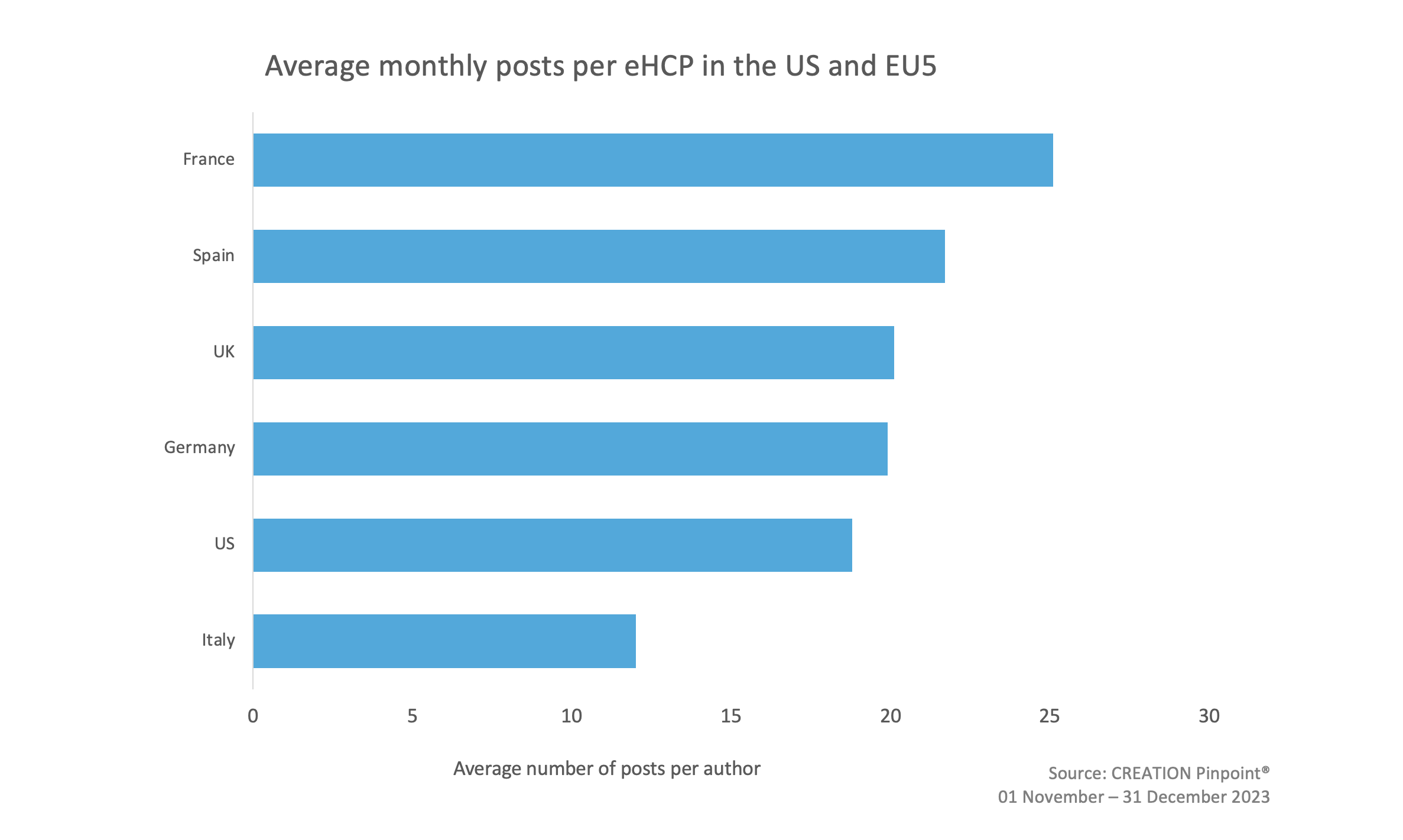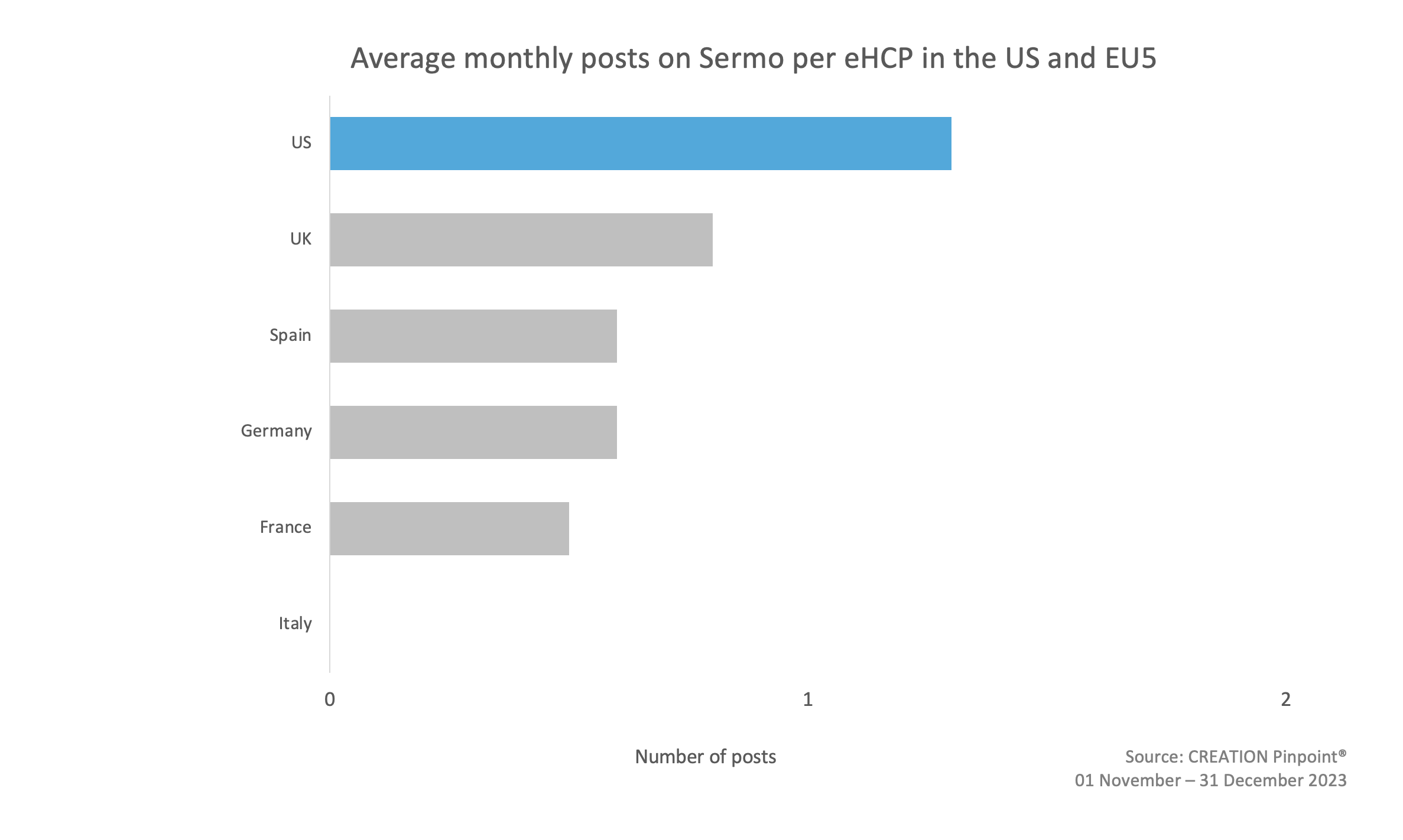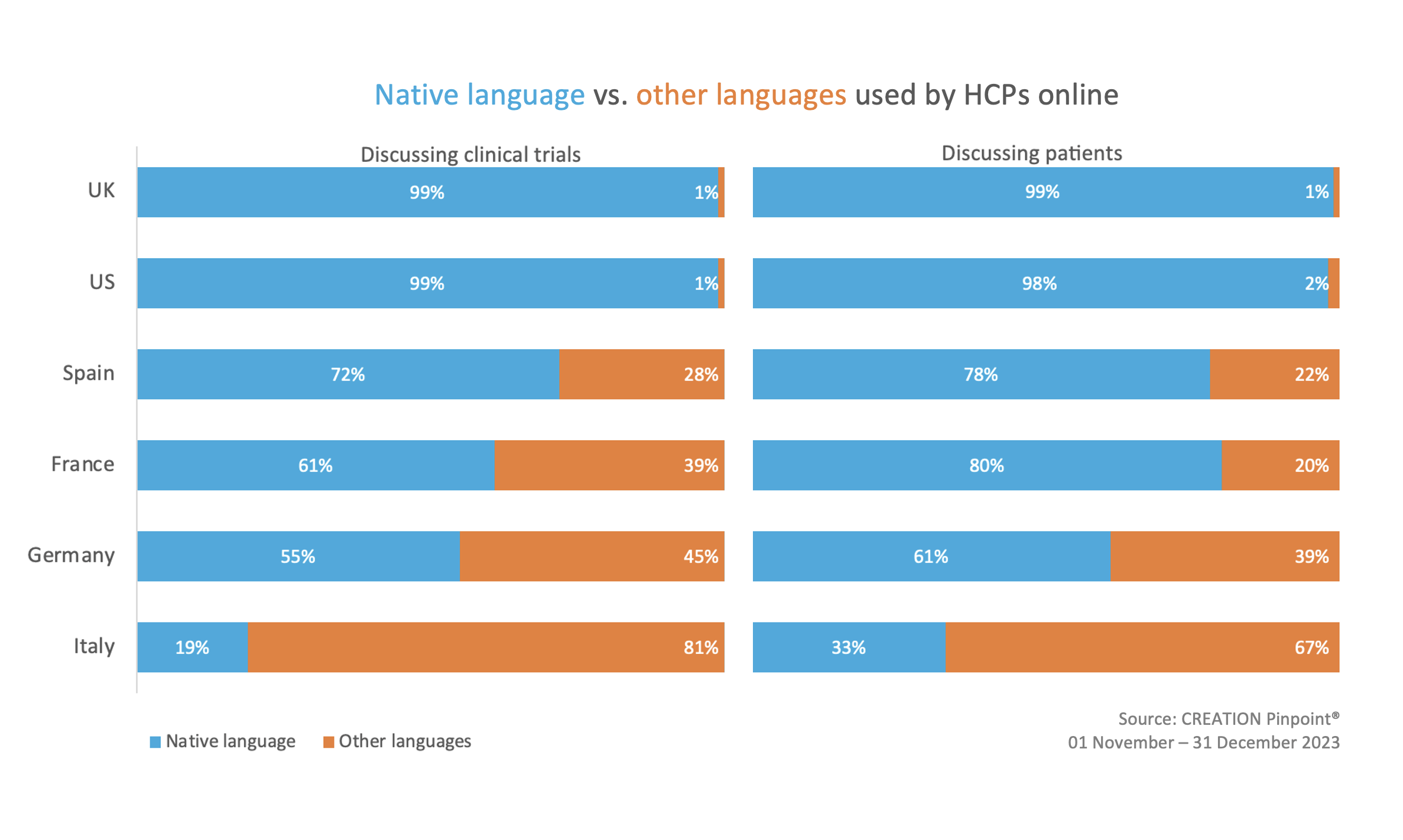15.03.2024 | Insight
How market specific eHCP digital behaviours can inform your health communications
When trying to foster meaningful relationships with healthcare professionals (HCPs), there is no “one size fits all” approach. Online HCPs’ (eHCPs) digital behaviours, such as what social media platforms they use and how they interact with one another, can differ considerably from market to market. For example, Japanese eHCPs are distinct from their counterparts in North America and Europe, being more likely to engage with peers on platforms which don’t exist in other markets and value anonymity in their online profiles.
It is essential, then, to understand the specific behaviours and needs of your eHCPs in your market, to be able to effectively identify and engage with those who are influencing the conversation in your therapy area.
Using CREATION Pinpoint, we analysed over 1.3m posts from more than 65,000 eHCPs in the US, UK, France, Germany, Italy and Spain from November to December 2023. Our analysis shows that, while there are similarities, key differences divide eHCP behaviour between the markets.
eHCPs in Italy much less active on X; US eHCPs behind the EU5 average of activity

eHCPs in European markets were generally more active than their peers in the US on X during the study period. However, Italian eHCPs were notably less active than all other markets, with over eight less posts per author than the average for the EU5 as a whole. This makes it especially important to identify and engage with Italian HCPs who are influential online.
Similarly, the average posts by US eHCPs is slightly lower than what initially may be expected. What accounts for the seemingly low activity amongst eHCPs in the United States? The answer may lie in the variety of different platforms used by eHCPs in the US.
Prominent eHCPs in the United States use a variety of platforms
American eHCPs, as well as those in the UK, have grown their presence on a mix of different social media platforms. For example, eHCP TikTok accounts have been steadily growing in popularity.
View this post on Instagram
The top 10 most followed American eHCPs use more than double the number of platforms than French counterparts. They are active on at least 3 different public social media platforms, including LinkedIn and Instagram.
While the conversation on X tends to skew towards more peer-to-peer conversations, short form video content on other platforms is used by eHCPs particularly in the US and UK to engage patients and other health stakeholders.
@drkevinfernando Hi, I’m Kevin Fernando and in this video, I will briefly introduce myself. Please follow my channel to learn more about a range of commonly prescribed drugs in the UK. I will cover reasons why the drug in question is prescribed, how the drug works, commonly encountered side effects and how to manage them as well as other relevant advice. I hope you find these videos helpful. #generalpractitioner #patientcare #medicationmanagement #type2diabetes #cardiovasculardisease #kidneydisease #metabolichealth #heartdisease #obesity #overweight ♬ original sound – drkevinfernando
We observed that American eHCPs post more on Sermo, a private social media network for physicians, than those in other markets. This means that those in industry wishing to engage meaningfully with American eHCPs need to ensure they are identifying them in the wide range of spaces used by eHCPs in the US online.

Note how, despite being the most active on X during the study period, French eHCPs made considerably fewer posts on Sermo. This highlights the importance of finding the spaces online where your eHCPs are talking, from market to market.
eHCPs in Europe communicate in different languages depending on the context
As well as identifying the platforms used by eHCPs in different countries, it’s important to identify the languages they use when engaging online. We analysed trial and data conversations across markets, to identify what languages were used when discussing studies and scientific data online. What we found is that there were stark differences in the languages used to communicate online between markets.

When discussing studies and trial data, UK and US eHCPs unsurprisingly speak overwhelmingly in English. Italian eHCPs also discussed trials and data mainly in English. For Germany, English followed closely behind German as the most common language used. This is an important insight for industry communication; eHCPs tend to use different languages depending on the topic being discussed.
When talking about patient care, eHCPs in all European markets are more likely to use their countries’ native language in comparison to trials. For example, Italian eHCPs spoke in Italian 14% more when discussing patients, while French eHCPs used French 19% more than in the trial and data conversation. This shows the importance of tailoring HCP messaging to suit language needs, not only on a market to market basis but also across different areas of interest for your healthcare professionals.
Better Listening for Better Health
There is an incredible amount of variation and nuance in the way eHCPs use public social media. Our research shows there is value in applying market-specific insights to define and deliver an effective communication strategy. Varying levels of activity, use of different platforms and changes in language across topics are just some of the contributions to the challenge faced by pharma to make sure the right messages reach the right people.
We believe that better listening leads to better health, and gaining a deeper understanding of eHCP behaviour is possible through thorough social listening. To discover how CREATION.co can help you learn from and support HCPs, why not watch our Beginner’s Guide to How HCPs use X, TikTok, Instagram and LinkedIn, or email [email protected] for more information
 By Cameron Bassindale
By Cameron Bassindale 
